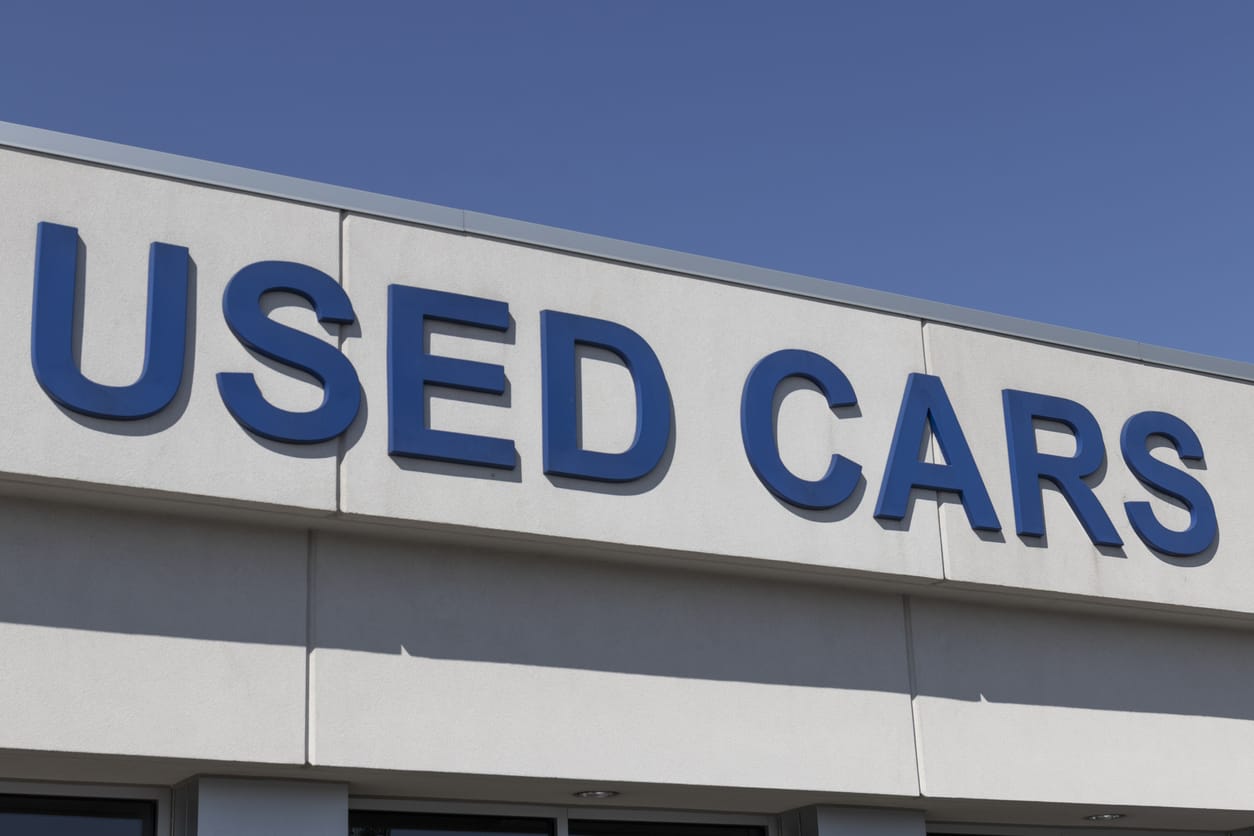In the midst of the ongoing bear market, the trucking industry, and more specifically the dry van freight capacity, is witnessing an extraordinary phenomena. In spite of projections that capacity will decrease, that number continues to defy predictions and remains high. This unanticipated trend raises critical considerations, especially in light of statements made by industry experts such as David Jackson, CEO of Knight-Swift.

H2 2020 to Early 2022: A Period of High Freight Rates and Profits
In the trucking industry, the second half of 2020 and the first few months of 2022 were an incredible time due to skyrocketing freight rates. The profitability of trucking companies was significantly impacted by this rise, which was unheard of in recent memory. This section will analyze the factors that contributed to these rate hikes and look at how the unexpected financial gain helped trucking companies deal with the difficulties presented by the current lower-rate environment.
Analyzing Profit Trends Due mostly to the higher freight rates at this time, trucking companies experienced a significant boost in their profits. The boom was a reflection of deeper market dynamics rather than just a lucky break. Partly as a result of changes in customer behavior and supply chain interruptions, there was an increase in demand for trucking services. Businesses benefited from this demand by increasing their profit margins. For many in the business, this financial safety net has been crucial in enabling them to weather the subsequent decline in freight prices.
Impact of Diesel Prices During this time, the price increase of diesel had two effects. On the one hand, it made trucking businesses’ operating expenses go up. On the other side, it also contributed to the increase in freight costs. The total increase in freight rates was partly caused by the increased cost of gasoline, which was frequently passed on to customers. For trucking companies, this scenario provided a complex interaction between expenses and revenue, with higher freight rates frequently outweighing higher fuel costs, resulting in total profitability.
Readers can learn more about the trucking industry’s adaptability to shifting economic conditions by comprehending these processes. The high freight rates of 2020–2022 indicate the industry’s flexibility in meeting market demands and managing cost volatility, more than just a financial peak.

Diversification has become a vital tactic in the highly variable transportation industry for surviving economic downturns. This strategy, which entails expanding into less competitive markets, has shown to be a reliable buffer for transportation companies during economic downturns. We learn more about how diversification is essential to keeping the trucking business stable during difficult times by breaking down the makeup of income streams and assessing the durability of specialized services.
Revenue Breakdown: A Mosaic of Stability Amidst Change The revenue structure of the trucking industry indicates a deliberate move toward a more diverse portfolio. Even though they are important, traditional over-the-road dry van services currently account for little more than half of many businesses’ overall revenue. Specialized transportation services like flatbed, temperature-controlled, and chemical shipping are increasingly responsible for the remaining revenue. By focusing on specialized services rather than general freight, this diversification into specialty markets provides a more consistent revenue stream.
Stability in Specialized Services: The Bulwark Against Economic Swings The defense against the unpredictability of the overall freight industry has been the emergence of specialized transportation services. Even in times of economic recession, these services—which are frequently customized for certain products or industries—tend to have more stable prices. For example, regardless of general market trends, temperature-controlled transportation—which is essential for perishable goods—remains in demand. Because of this segment’s durability, trucking companies can weather times when traditional dry van transportation is less in demand.
In summary, service diversification is now a crucial tactic used by trucking companies to reduce the risks brought on by market instability. These organizations have developed a more robust and reliable business model by striking a balance between providing specialized transportation services and standard dry van services. This strategy not only protects against the present market downturns but also sets these businesses up for long-term success in the ever-changing trucking industry.

The Role of New Entrants: Understanding Capacity Dynamics
Although their impact on market trends is sometimes overlooked, new entrants play a crucial role in the ever-changing transportation business. The purpose of this section is to dispel the idea that the industry’s capacity exodus is primarily caused by smaller carriers. Rather, it highlights how important carrier age is, paying particular attention to how the average size of new entrant companies is increasing and how this is changing the dynamics of capacity in the trucking industry.
Misconceptions about Capacity Exit There are many myths in the trucking industry, especially about which companies reduce capacity and leave the market. It’s common knowledge that in hard economic times, smaller carriers—who sometimes struggle with fewer resources—leave first. But the picture presented by data and industry trends is different. The carrier’s age, rather than just its size, is what matters most for capacity dynamics. Regardless of their size, younger businesses are more likely to modify their capacity in reaction to market swings, defying the popular belief that smaller businesses are more vulnerable.
Influence of New Entrant Size There has been a noticeable rise in the number of new competitors entering the trucking industry, which has an effect on market capacity. The average size of new general freight trucking companies launched after March 2018 is significantly greater than those founded in the six years prior, according to data from the Business Dynamics Statistics program. The average size of a corporation has increased from about 2.8 to 3.5 people, which is a significant 25% gain. Due to their increased size, new entrants are better able to withstand changes in the market, which causes a slower rate of capacity leave. Due to their greater resources, larger companies are able to withstand economic pressures that would otherwise force smaller companies to scale back or withdraw from the market.
Stakeholders in the trucking sector can anticipate and adjust to market changes more effectively by comprehending these subtleties in capacity dynamics, resulting in more strategic and informed decision-making. Larger new entrants not only change the capacity landscape but also signal a change in the business techniques these companies are using, creating a new standard in the evolution of the industry as a whole.

Forecasting the Future: When Will Equilibrium Return?
Anticipating the point at which the dry van truckload transportation market would stabilize is a more subjective art than a scientific one. The intricacies of predicting supply and demand equilibrium are explored in this section. We want to shed light on probable timetables and influencing variables that will steer the trucking sector towards a more balanced future by analyzing historical trends and current market dynamics. This investigation is not merely a scholarly endeavor; it has real-world implications for logistics management, trucking businesses, and the overall economy.
Analyzing Historical Trends Like many other industries, the trucking industry runs on cycles. Based on past data, there is a common correlation between these cycles and wider economic patterns. For example, transportation demand tends to increase during economic booms while decreasing during recessions. Still, the situation we’re in right now is a little unusual. Traditional models have been altered by the COVID-19 pandemic’s exceptional highs in freight rates and demand. It is difficult to use historical data as a trustworthy predictor because of this distortion. It’s crucial to remember, too, that capacity reductions and transportation payroll cuts have typically been steady processes rather than sudden changes.
Predicting Future Market Dynamics A number of factors will determine the dry van freight market’s future. An important role is played by economic policies, especially those of the Federal Open Market Committee. For instance, interest rates have an impact on corporate investments and consumer spending, which in turn affects the demand for freight. In addition, changes in consumer behavior and technology, such as the rise in e-commerce, have an effect on the need for trucking services. A conservative estimate, taking into account these factors, would put the market’s return to equilibrium no sooner than the second quarter of 2024. Nevertheless, unanticipated surges in demand could accelerate this timescale, while persistent economic concerns could delay it down.
In a nutshell the dry van freight market is negotiating an unpredictable time right now. While there is some insight available from previous trends, accurate forecasting is difficult given the specific economic and social elements influencing the current market conditions. The trucking industry’s stakeholders need to be alert and flexible at all times, prepared to react to the ever-changing dynamics of supply and demand, which will ultimately drive the market into equilibrium.

Conclusion: Understanding Market Resilience and the Role of Strategic Partnerships The dry van truckload sector’s journey through this present bear market emphasizes a valuable lesson in resilience and adaptation. Not only has this market segment shown surprising stability, but our investigation has also shown important elements that have supported it, such as persistently high freight rates, strategic diversification, and the changing dynamics of new entrants. This article serves as a guide for people negotiating the complexities of the trucking sector and highlights the value of strategic agility and forethought in the face of market swings.
Ship A Car, Inc.: A Comprehensive Solution in a Complex Market Ship A Car, Inc. (SAC) distinguishes itself as a pillar of excellence and dependability in this ever-changing market. SAC is a complete solution supplier for all freight transportation requirements within the United States, not simply another freight shipping company. SAC caters to the individual requirements of every customer by offering a wide range of services like as oversized cargo, dry van loads, power only loads and more. No matter the size or complexity of the freight shipment, the company’s nationwide network and dedication to quality and customer service guarantee that it will be handled with the highest care and professionalism.
Choose Ship A Car, Inc. for Unmatched Freight Shipping Expertise It’s critical to select the correct freight shipping partner in a business as dynamic and unpredictable as trucking. Ship A Car, Inc. is a partner in the success of your company, not merely a supplier of services. You may access an unmatched network of shipping options with SAC, which is supported by knowledge and a thorough comprehension of the freight industry. We invite you to see for yourself the improvements that SAC may bring to your supply chain and logistics requirements. For a shipping solution tailored to your specific needs, call (866) 452-3657 to speak with a SAC transport consultant. You may be sure that Ship A Car, Inc. will provide your freight with the best handling possible.
Q: Why has dry van truckload capacity remained high despite a bear market?
A: A number of variables, including accumulated profits from high freight rates in 2020-2022, service diversification, and the larger size of new entrant carriers, have contributed to the capacity remaining high.
Q: When is it anticipated that the dry van truckload market will reach equilibrium?
A: In light of previous patterns and the state of the economy in the present day, the equilibrium of the market is not anticipated to occur any sooner than the second quarter of 2024.
Q: Why is Ship A Car, Inc. considered to be one of the best options for freight transportation in the United States?
A: Because of its extensive service area, national reach, and consistent quality of service, SAC stands out among its competitors and is a dependable option for fulfilling any freight shipping requirement.




